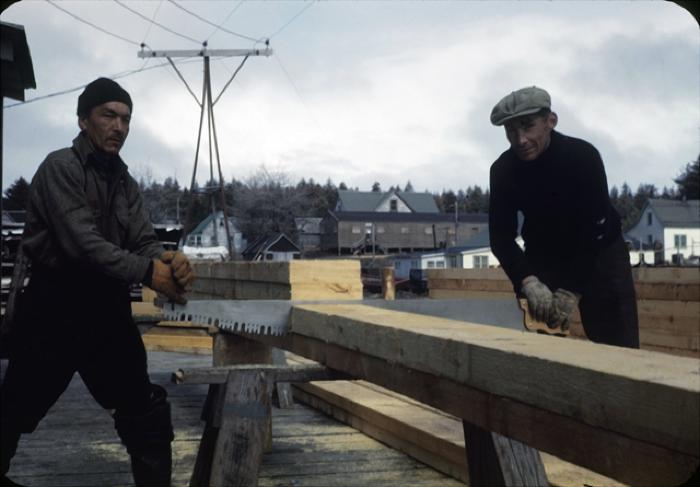Saw — Pilaq

Saws are a relatively recent introduction to Kodiak. Russian traders brought the first metal saws in the late eighteenth century. Before the introduction of European tools, however, Alutiiq people devised a variety of manufacturing techniques to complete jobs that employ saws today.
Bone and wood objects that needed to be cut in half were whittled around their girth, the way a beaver gnaws a standing tree. Then, the craftsman snapped the two halves of the object apart manually. Alutiiq people shaped sheets of slate into spears and knives in a similar way. A sharp-edged chip of stone from a beach cobble was used to saw grooves into thin sheets of slate, forming the outline of a tool. Excess slate was then snapped away following these grooves. Archaeological data indicate this technique is more than five thousand years old.
In the twentieth century, as dories replaced kayaks, metal saws became important for boat building. In gathering materials for handcrafted boats, Alutiiq carpenters cut natural knees—arched boat ribs—from living trees. They removed long, L-shaped sections of wood from the lower trunk of a standing tree and its associated roots. This produced a strong, naturally bent piece of lumber that could be cut into sturdy boat ribs. This technique did not kill the tree, but it left a distinctive scar. Evidence of this practice is preserved in the spruce forests of Kodiak and Afognak islands. You can still see dory-knee trees as you walk through the woods, particularly in stands of large trees near the shore. The oldest scars bear the marks of saw teeth and axes. More recent scars reflect the adoption of chain saws.
